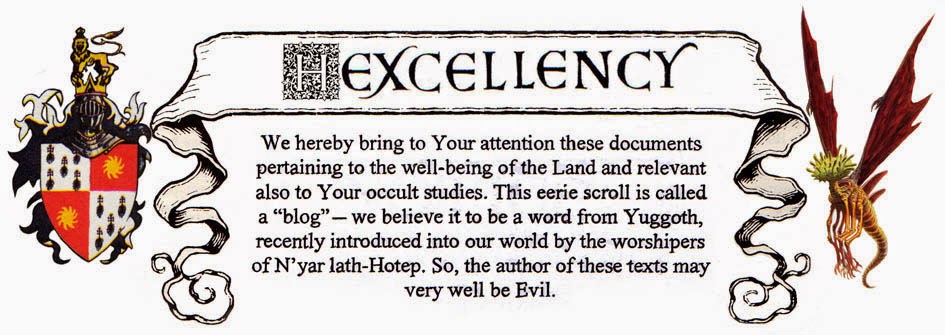Lots of people have been very busy bees since what we might call The Great Open Gaming License Debacle of 2023.
Paizo have been working on their ORC License and are trying to remove the OGL from Pathfinder entirely — no Drows and all. They call it the Remaster Project. It’s gotta be a tedious endeavor.
Darrington Press aka Critical Role have already released a game, Candela Obscura, and they’re working on their own fantasy role-playing game system, Daggerheart, completely independent from D&D and without any flavor of OGL.
Cephalofair Games aka Gloomhaven is also launching their own fantasy role-playing game system AND releasing a revamped superlegacy Gloomhaven 2e.
Kobold Press have released a fantasy role-playing game system, Tales of the Valiant, again, with no OGL.
MCDM is also preparing to launch their own role-playing game.
And then you have Goodman Games, Arcane Library, Troll Lord Games and countless others.
The sheer quantity of writing that took place since last January is astounding.
And unless you work at Paizo or Darrington Press or Kobold Press, your work has a very slim chance of being seen or read at all. There’s so much material being made — it’s like a galaxy, and your book is just one Oumuamua floating around in it.
For most creators, TTRPG work is not profitable; even when working 70-hour weeks you are not guaranteed to be able to pay your rent.
It’s the indie paradigm and it’s here to stay, alas. You can make stuff, but it shall remain fan art, fan fiction and fan design.
Remember, DriveThruRPG is the biggest storefront out there, and yet 72% of all tabletop role-playing game products on DriveThruRPG sell less than 50 copies. This whole thing is not a market but basically a lottery.
Out of every one hundred indie publishers of tabletop role-playing games, seventy-two basically do that staggering amount of work for nothing: the long hours trying to wrestle columns into place, the endless tinkering with margins, fonts and elusive image anchor points, the eight and a half different versions of the cover, the six thorough editing passes, the entire weekend spent on a single black and white drawing, all in vain.
That is something to ponder.
The homeless man begging for change in front of your neighborhood subway station is a better entrepreneur because he makes $1 an hour at the very least…
In my previous post I mentioned Acererak’s Guide to Lichdom, which has now disappeared from DriveThruRPG’s listings. It went Platinum — then it vanished.
Is that the trick then? Write Drizzt’s Guide to the Underdark or Jim Darkmagic’s Book of Big Bads, sell a lot of copies, pull it as soon as you get a cease and desist, and keep the money?
People become indie TTRPG publishers because the technology is available to make such games and because there are webstores that can sell such games. In 1985, the technology wasn’t there — layout, PDF files, etc — and even if it had been available, where would you have sold your finished product? On the street? In front of game stores? And in what format? Zine? Floppy disk?
Ten years from now people will be making their own video games, because the technology will be there, accessible to almost anyone. A creative person alone in their apartment will be able to make an Assassin’s Creed type of game in about six months, all by themselves, without having to commission any art; and there shall be indie video game webstores to sell those products. Steam and itch are already on it.
Most of the talent that you see in indie TTRPS these days will migrate to indie video games by 2030. It’s inevitable.
So, what is the solution here?
That’s the sad part. There isn’t one.
It’s unsolvable, even if you roll a critical 01% in Occult.
You can shelve your TTRPG project and start working on that big video game right away, to be ahead of the curve. Or you can keep making TTRPGs, keep hustling, and perhaps you’ll get lucky, who knows? Or you can give up marketing and hustling entirely and just make the stuff you want to make—
The tidal wave of publications on DTRPG and itch is enough to make you think that there are way more worldbuilders than there are people who buy and actually play third-party adventures and games. It reminds me of something my dad said back in 1984. My best friend and I spent literally every Saturday working together on maps, cities, taverns, sewers, traps, puzzles, religions, lists of NPCs, magic items, rumors, legends, trade routes, types of vessels, types of armor, either at my place or at my friend’s. My dad understood what a role-playing game was because he had seen us play a few times, and he understood that those innumerable Saturdays were just prepping.
One day that he was looking at our huge world map on the kitchen table, dad said to us: “When you boys finally decide to play, it’ll be absolutely amazing.”
And he was right. It was amazing.
In the early eighties, everybody I knew was worldbuilding, creating their own continents, empires, fauna, flora, deadly traps, and I even knew a guy who created a langage for his world, like Tolkien or Prof. Barker.
We’re all still exactly like that. Nothing has changed.
You put it up for sale and earn $5 or $10? Good for you!
But we are still doing the exact same thing we were doing in 1984.
It may not be the booming business you wanted it to be, but it still is a damn good time, trust me.
I say, enjoy this effervescent scene while it lasts. You’re going to have such nice memories of this period when it’s gone.














